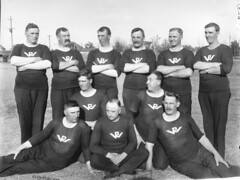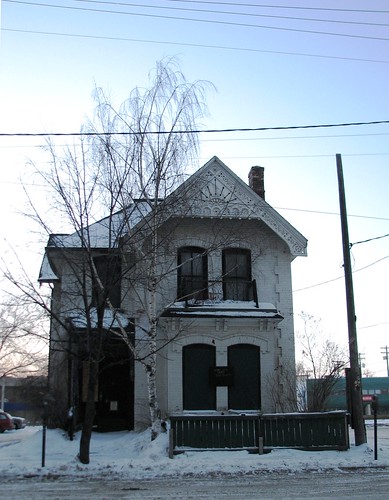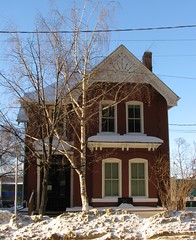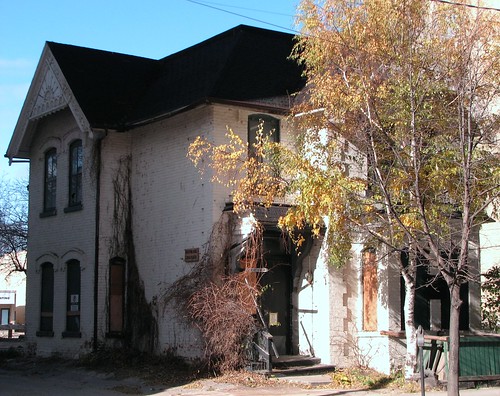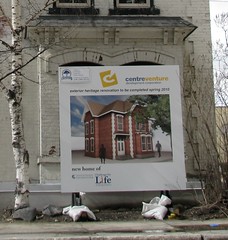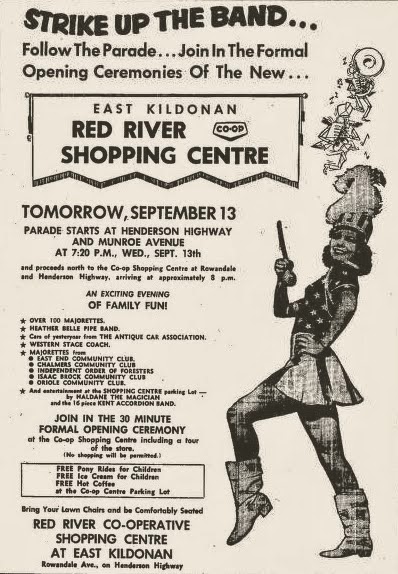Sad news that 1021 Wellington Crescent has been significantly damaged by fire.
Here's a look back at its history. Part 1 will look at some of the families that have lived there over the decades. Part 2 is about its designer and builder Frank Lount.
Note that this information is taken mainly from Henderson Directories up to 1965. Henderson's were not always 100% accurate in that it sometimes took a year or two for addresses to completely "catch up" to the owner. Also, in the case of this property, it seems that it may have served as two residences at times, likely the main house and a rental suite. This may also account for some of the overlap.
This is not meant to be an exhaustive biography of the families, just sketches cobbled together from various newspaper articles to get an idea of who loved there. After 1960 the popularity of " society pages" and printing people's full address whenever they are mentioned in the paper waned. As a result, as the decades go on les material can be found on each family.
Some families appeared in the newspapers a lot, others did not.
If you wish to correct any details or add information, please email me at cassidy@mts.net.
1933: Construction
Frank Lount designed and built
1021 Wellington Crescent in 1933 but his family never lived there. According to the city's Historical Buildings Committee,
he retained ownership of it until the early 1940s. (More on Lount in part 2.)
1933 - 1944: The Sures Family
Fred Myer Sures was born in Russia and came to Winnipeg in 1906. In 1915, at the age of 20, he created the Canadian Shirt and Overall Manufacturing Company. In the early 1920s he and brother Nathan created Sures Brothers Ltd., a dry goods manufacturer and wholesaler at 248 McDermot.
Heimskringla, December 18, 1929
The company grew quickly after taking over a couple of bankrupt competitors, including footwear company Ames Holden McCreedy in 1925 and dry goods company R. J. Whitla and Co. in 1931. After the Whitla
takeover, Sures Brothers were a major player in both the dry goods
manufacturing / distribution business as well as the garment industry.
In 1931 Fred also created the Radio Oil Refinery Company Limited.
October 3, 1936, Winnipeg Tribune
In 1933 the family, which consisted of wife Sarah and children Pearl, Elaine, Florence, Ethel and Joseph, moved from 177 Machray Street into the newly constructed 1021 Wellington Crescent.
The house appears to have had an uneventful existence while the Sures' lived there, aside from a 1939 goldfish theft that annoyed Mrs. Sures.
December 23, 1937, Winnipeg Tribune
The Sures' were active philanthropists in the Jewish Community. Fred, for instance, was a past president of the Free Hebrew School and a board member of Shaarey Zedek Synagogue.
Fred died on December 21, 1937 though the family continued to live there into the early 1940s.. (Brother Nathan, company president, lived across the street at 1034 Wellington).
In 1943 - 44 the Sures', vacated the property. Mrs. Sures moved to Harvard Street and Joseph moved to Campbell Street.
1944 - ca. 1949: The Powell Family
In 1944 the house was owned by Kenneth Powell, president of grain company Hallet and Carey and the president of the Winnipeg Grain Exchange in 1942-43. The family included wife LaRene and son Wallace
Powell started in the grain industry in Winnipeg in 1915 and joined Hallet and Carrey in 1924, working his way up to president. In 1952 the company's name was changed to K. A. Powell.
Powell appears
often in the business pages in the 50s and 60s as he was appointed to
numerous corporate boards, including the Toronto Dominion Bank and
Labatt Brewery. He sold his company in 1970 to CanX Grain and died on June 13, 1982.
1949 - 1957: The Smith Family
February 16, 1949, Winnipeg Tribune
The Harold A. Smith Family lived in the house by late 1949. Smith was a son of Sidney Thomas Smith, one-time president of the Reliant Grain Company. After his death in 1947 the company was liquidated.
May 27, 1946, Winnipeg Tribune
In the late 1940s Harold was president of a company called Insul-Mastic, manufacturers of cork-based undercoating for cars. He was known as a sportsman and owner of Goldstream Stables.
By 1950 the Smiths were pretty much out of the limelight and the newspapers. Son Clancy was away at school in North Dakota and eldest daughter Marilyn got married and moved to N. D. in 1950. The stables, too, seemed to disappear around 1951. The family may have retiened ownership of the house for a few more years.
1955 - 1961: Dr. Georgina Hogg
June 19, 1945, Winnipeg Tribune (Hogg on left)
Georgina Hogg was from Landis, SK and came to Winnipeg to attend medical school, graduating in 1945. After an extended trip to the U.S., by 1953 she was on staff at General Hospital's department of pathology and a member of the faculty of medicine at the University of Manitoba. Her parents came to live with her at 1021 until their deaths.
Hogg may have lived in the smaller suite as the Smiths are still listed in the
Henderson Directories of 1955 and 1956 and she overlaps with the next
owners by a couple of years. It appears that she moved out in 1961.
Hogg became a senior pathologist with national stature and was made Professor Emeritus at the U of M in 1990. She died on April 21, 2002 at Victoria Hospital.
1960 - 1966: The Peterson Family
Though Investors Syndicate had been around since 1926, its first company president was appointed in 1946. He was Theodore Peterson who had been with the company since 1930.
Peterson and his wife had one daughter, Jonina. In 1966 Peterson was replaced at Investors by Clarence Atchison and the family moved to Ottawa.
1966 - 1991: The Halter Family
Aubrey Halter and Nola Borwn (Courtesy of Dr. Reese Halter )
Aubrey Halter was a lawyer and land developer. Nola Brown was a writer and television personality. The two met in the late 1950s and were married in 1963.
The Halters inhabited the house longer than any other family. They moved there In 1966 and raised three children. Dr. Reese Halter, a California-based conservation scientist; Jason Halter, a Toronto-based architectural designer and professor; and Diana who lives in British Columbia.
For more about the Halters, see The Halters of Winnipeg. For more about their time at the house see this Free Press story.
1989 - 2004: The Sifton Family
Leo Mol delivers "Fawn and Deer" (courtesy of Sifton Family)
In 1989 Graeme and Melanie Sifton purchased 1021 Wellington from the Halter Family. Graeme was a previous owner of the Winnipeg Free Press. They raised their two children, Micah Nancy Sifton and Trevor Klassen Sifton, there.
Renovations done to the home during their 15-year stay included the addition of a circular driveway and gateposts.
2004 - 2008: The Asper Family
In 2004 the Asper family purchased the home, though news articles don't specify which of Izzy and Ruth Asper's three children owned it.
2008 - 2014: The Dornetshuber Family
The final owner was the Dornetshuber Family. In 2008-09 they invested around $1.5 m to renovate the home. They were out of the province at the time of the fire and nobody was hurt. (For more drawings of the renovations.)
Related:
1021 Wellington Crescent Historic Building Committee
Frank Reade Lount Winnipeg Architecture Foundation
Sures House Winnipeg Building Index
News coverage of the fire: Free Press, CBC













